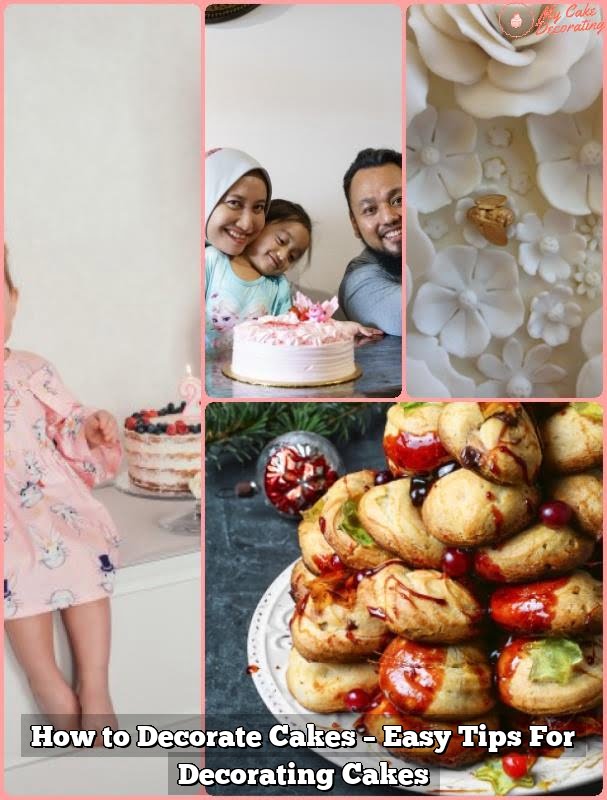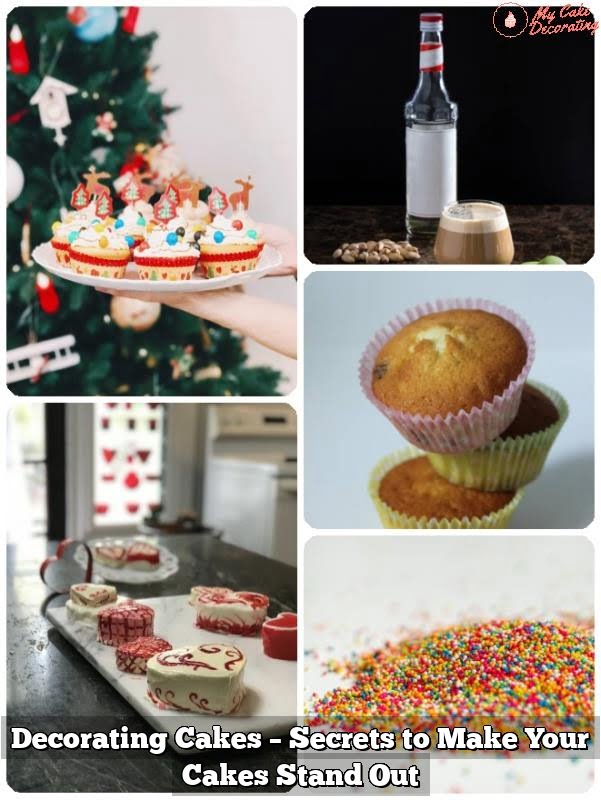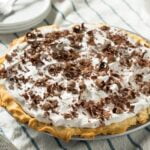Are you wondering what to decorate cakes with? The art of cake decoration plays a significant role in enhancing the overall appeal and visual appeal of a cake. From fondant and buttercream to edible flowers and intricate piping techniques, the possibilities for decorating cakes are endless. In this article, we will explore various options for decorating cakes, ranging from classic choices to innovative techniques, and provide insights into the importance of cake decoration in creating stunning and delicious confections.
When it comes to cake decoration, the choice of ingredients and techniques can make a significant impact on the final result. Fondant, buttercream, edible flowers, piping techniques, sprinkles, fresh fruit, and chocolate decorations are just some of the many options available for creating visually stunning cakes.
Each option offers its own unique advantages and can be used to achieve different decorative effects. Whether you’re looking to create an elegant wedding cake or a whimsical birthday cake, understanding the various options for decorating cakes is essential in achieving your desired outcome.
Throughout this article, we’ll delve into the versatility of fondant as a cake decorating ingredient, the classic appeal of buttercream, the beauty of using edible flowers and plants in cake decoration, as well as exploring various piping techniques that allow for intricate designs with icing. Additionally, we will also discuss how sprinkles, dragees, edible glitter, fresh fruit, and chocolate decorations can be used to add sparkle and fun to cakes.
Finally discussing tools and supplies that are essential for success in mastering cake decoration techniques. Let’s dive into the world of cake decoration.
Fondant
One of the key benefits of fondant is its ability to hold intricate detailing, making it an ideal choice for creating custom designs and decorations on cakes. Whether it’s a wedding cake with delicate lace patterns or a whimsical birthday cake with fondant figurines, the possibilities are endless with this versatile ingredient.
When it comes to what to decorate cakes with, fondant offers a wide range of creative opportunities. From sculpting lifelike flowers and ribbons to covering entire cakes for a sleek canvas, fondant provides cake decorators with the flexibility to bring their artistic visions to life.
| Benefit | Description |
|---|---|
| Versatility | Fondant can be shaped and molded into various designs for cake decoration. |
| Durability | It holds up well in different weather conditions and prevents the cake from drying out. |
| Professional Finish | Fondant gives cakes a smooth and professional look that is perfect for special occasions. |
Buttercream
When it comes to decorating cakes, buttercream is a classic choice that never goes out of style. This creamy and smooth frosting is not only delicious but also versatile in creating various designs and textures on cakes. Whether you’re a beginner or an experienced baker, buttercream offers endless possibilities for cake decoration.
One popular way to use buttercream for cake decoration is through piping techniques. By using different piping tips, you can create beautiful floral designs, intricate patterns, and even write messages on cakes. Here are some common piping techniques used with buttercream:
- Rosettes: These simple swirls resemble roses and can be used to cover the entire surface of a cake or as decorative accents.
- Borders: Create borders around the edges of the cake using star tips or rope tips to add a finished look.
- Basketweave: This technique involves crisscrossing lines to create a woven pattern that adds texture to the cake.
In addition to piping, buttercream can also be used as a base for attaching other decorations such as edible flowers, fresh fruit, or chocolate elements. Its smooth consistency makes it easy to work with and provides a stable foundation for other embellishments.
Furthermore, buttercream can be tinted with food coloring to achieve custom colors for cake decoration. Whether you want pastel shades for a baby shower cake or vibrant hues for a birthday celebration, buttercream allows you to personalize your creations with ease. Mastering the art of working with this classic frosting opens up endless opportunities for creativity in cake decoration.
Edible Flowers and Plants
When it comes to decorating cakes, adding edible flowers and plants can be a stunning way to create a natural and beautiful touch. Using these elements can elevate the appearance of the cake and make it look effortlessly elegant. Whether for a wedding, birthday, or any special occasion, edible flowers and plants are a unique and eye-catching decoration option.
Here are some popular edible flowers and plants that you can use to decorate cakes:
- Roses
- Lavender
- Violets
- Pansies
- Nasturtiums
It’s important to note that not all flowers and plants are safe for consumption, so it’s crucial to do your research or consult with a professional florist or baker before using them for cake decoration. The flowers and plants should be pesticide-free and thoroughly cleaned before being placed on the cake.
The delicate nature of edible flowers and plants requires careful handling when decorating a cake. They should be strategically placed to enhance the overall look of the cake without overwhelming it. Additionally, consider the flavor profile of the flowers and how they will complement the taste of the cake.
Piping Techniques
Piping techniques are a fundamental skill for anyone looking to decorate cakes with professional-looking designs. Whether you’re creating intricate floral patterns, elegant borders, or personalized messages, mastering piping techniques can take your cake decoration to the next level. The key to successful piping is using the right consistency of icing and practicing different pressure and movement techniques.
One popular piping technique is called “rosette piping,” where the decorator uses a star-shaped piping tip to create beautiful swirls that resemble roses. Another classic technique is “basketweave piping,” which involves crisscrossing lines of icing to mimic the look of a woven basket. Additionally, using different sizes and shapes of piping tips can create diverse patterns and textures on cakes.
When it comes to what to decorate cakes with in terms of piping, there are various options available in addition to traditional buttercream icing, such as royal icing and ganache. Each type of icing has its own unique properties and uses, so it’s important to experiment with different recipes and find what works best for the design you want to achieve.
Furthermore, it’s essential for aspiring cake decorators to have the right tools for piping. This includes an assortment of piping tips, pastry bags, couplers, and a good quality stand or hand-held mixer for preparing the icing. With practice and patience, anyone can learn how to use piping techniques effectively and create stunning designs on their cakes.
| Piping Technique | Description |
|---|---|
| Rosette Piping | Create beautiful swirls resembling roses using a star-shaped tip. |
| Basketweave Piping | Mimic the look of woven baskets by crisscrossing lines of icing. |
| Tools Needed | Piping tips, pastry bags, couplers, mixer. |
Sprinkles, Dragees, and Edible Glitter
Types of Sprinkles
Sprinkles, also known as jimmies or hundreds-and-thousands, are small pieces of confectionery used to decorate cakes, cookies, cupcakes, and other desserts. They come in different shapes such as stars, hearts, and even metallic balls. Nonpareils are tiny round sprinkles that add a delightful crunch to the texture of the cake. For a more sophisticated look, sugar pearls or dragees can be used to create an elegant finish on cakes.
Using Edible Glitter
Edible glitter is another decorative element that adds a whimsical touch to cakes. Made from sugar or gum arabic with added food coloring, edible glitter comes in both coarse and fine textures. It can be dusted over the top of cakes or used to create intricate designs on fondant decorations. Edible glitter is an easy way to elevate the visual appeal of any cake.
Adding Fun With Dragees
Dragees are small colored sugar candies that are often used as decorations on baked goods. They are available in metallic shades such as gold or silver, as well as vibrant colors like blue and pink. When used sparingly, dragees add an elegant shimmer to cakes and other sweet treats. However, it’s important to note that some types of dragees may not be considered edible due to their hard outer shell.
Incorporating these fun and sparkling elements into cake decoration can greatly enhance the overall presentation while adding a touch of whimsy and excitement. Whether it’s creating a dessert for a birthday party or a festive celebration, sprinkles, dragees, and edible glitter offer endless opportunities for creativity in cake decorating.
Fresh Fruit
When it comes to cake decoration, using fresh fruit can elevate the look and taste of your creations. Whether you’re making a simple fruit tart or a layered sponge cake, incorporating seasonal fruits adds a natural and refreshing touch to your desserts. From berries and citrus fruits in the summer to apples and pears in the fall, there are endless possibilities for decorating cakes with fresh produce.
Selection and Preparation
When choosing fruits for cake decoration, it’s important to select ones that are ripe but firm enough to hold their shape when sliced or diced. Berries like strawberries, blueberries, and raspberries make beautiful additions to cakes and tarts. Citrus fruits such as oranges and lemons can be used to make colorful zest or decorative slices. It’s also crucial to wash and dry the fruits thoroughly before using them to ensure they are free from any dirt or residue.
Placement and Presentation
Once you have selected and prepared your fruits, it’s time to think about how you want to incorporate them into your cake design. Fresh fruit can be used as a topping for a single-layer cake, scattered between layers in a multi-tiered cake, or arranged in an attractive pattern on top of a tart. Consider the colors, textures, and flavors of the fruits you are using and how they will complement the overall look of your creation.
Tips for Success
To ensure that your fresh fruit decorations stay fresh and vibrant on your cakes, consider brushing them with a light glaze made from apricot jam or simple syrup. This will not only add shine to the fruits but also help preserve their appearance.
Additionally, try to add the fruit decorations just before serving to prevent them from releasing too much moisture onto the cake. By following these tips, you can create stunning and delicious cakes adorned with seasonal fruits that will impress your friends and family.
By incorporating fresh fruit into your cake decoration repertoire, you can create visually stunning desserts that celebrate each season’s bounty while adding delightful flavors to every bite.
Chocolate Decorations
When it comes to cake decoration, using chocolate can take your creations to the next level. Whether you’re looking to add a touch of elegance or a burst of flavor, incorporating chocolate decorations can elevate the overall look and taste of your cakes. From simple curls and shavings to intricate designs, there are numerous ways to use chocolate as a decorative element.
One popular option for decorating cakes with chocolate is making chocolate ganache. This smooth and glossy mixture of chocolate and cream can be used as a filling, frosting, or glaze for cakes. It can also be poured over a cake for a sleek and professional finish. Additionally, ganache can be shaped into truffles or molded into various shapes to adorn the top of a cake.
Another creative way to decorate cakes with chocolate is by making delicate chocolate curls or shavings. These can be achieved by carefully shaving a bar of chocolate with a vegetable peeler or grater. The resulting curls and shavings can be arranged in clusters on top of the cake for an elegant and sophisticated touch. Furthermore, using different types of chocolate, such as white, dark, or milk chocolate, can add visual interest and depth to the decoration.
In addition to ganache and chocolate curls, you can also use molds to create intricate chocolate decorations such as flowers, leaves, or even monograms. By melting high-quality chocolate and pouring it into molds, you can make custom-designed decorations that match the theme or style of your cake. These unique embellishments will surely impress your guests and add an artistic flair to your confectionery creations.
Tools and Supplies
Cake decoration is an art form that requires the right tools and supplies to achieve success. From piping bags to fondant cutters, having the proper equipment can make all the difference in creating beautiful and professional-looking cakes. Whether you are a beginner or a seasoned cake decorator, it’s important to have a well-stocked supply of essential items on hand.
One of the most important tools for cake decoration is a set of good quality piping tips. These tips come in various shapes and sizes, allowing decorators to create intricate designs and patterns with icing. Additionally, having a variety of spatulas and offset spatulas is essential for smoothing buttercream and applying fondant. A turntable is also indispensable for easily rotating and decorating cakes from all angles.
In addition to tools, there are essential supplies that every cake decorator should have in their arsenal. This includes different colors of fondant and food coloring gels to achieve the desired color palette for decorations. Edible glue or royal icing is crucial for attaching fondant pieces and other decorations to the cake. Lastly, a good quality brush set for painting edible details and applying edible glaze can elevate the overall look of any cake.
To ensure successful cake decoration, it’s important to invest in high-quality tools and supplies that will help bring your creative vision to life. Having these essential items on hand will make the decorating process more efficient and enjoyable, allowing you to focus on creating stunning cakes for any occasion.
Conclusion
In conclusion, mastering cake decoration techniques requires a combination of creativity, skill, and the right tools and ingredients. Whether you choose to work with fondant, buttercream, edible flowers, piping techniques, sprinkles and dragees, fresh fruit, or chocolate decorations, there are endless possibilities for creating beautiful and delicious cakes. It’s important to experiment with different methods and ingredients to see what works best for your style and the occasion.
One tip for mastering cake decoration techniques is to practice consistently and not be afraid to try new things. Perfecting piping techniques or creating intricate chocolate decorations takes time and patience, so don’t get discouraged if it doesn’t come out perfectly on your first attempt. Additionally, investing in high-quality tools and supplies can make a significant difference in the outcome of your cake decorations. Having the right equipment can make the process smoother and more enjoyable.
Lastly, don’t be afraid to let your creativity shine when it comes to decorating cakes. Whether it’s using unexpected elements like edible glitter or incorporating seasonal fruits for a fresh twist, the possibilities are truly endless. Remember that the most important thing is to have fun with the process and enjoy the final result – a beautifully decorated cake that will impress and delight anyone who sees or tastes it.
Frequently Asked Questions
What Is the Best Thing to Use to Decorate a Cake?
The best thing to use to decorate a cake depends on personal preference and the desired aesthetic. Some popular options include buttercream frosting, fondant, fresh fruit, edible flowers, or chocolate ganache.
What Can I Top a Cake With Besides Frosting?
There are various alternatives to frosting when it comes to topping a cake. Whipped cream, glazes, fruit compotes, caramel or chocolate drizzles, and even decorative elements like sprinkles or edible glitter can add flavor and visual appeal to a cake.
What Are the 5 Kinds of Cake Decorating?
The five primary kinds of cake decorating include piping techniques using frosting or royal icing, fondant decorations such as sculpted figures or intricate designs, buttercream textured finishes like rosettes or ruffles, edible image printing with frosting sheets, and using chocolate for detailed decorations like curls or shavings. Each style offers different opportunities for creativity in cake design.

Welcome to my blog about home and family. This blog is a place where I will share my thoughts, ideas, and experiences related to these important topics. I am a stay-at-home mom with two young children. I hope you enjoy reading it! and may find some helpful tips and ideas that will make your home and family life even better!





